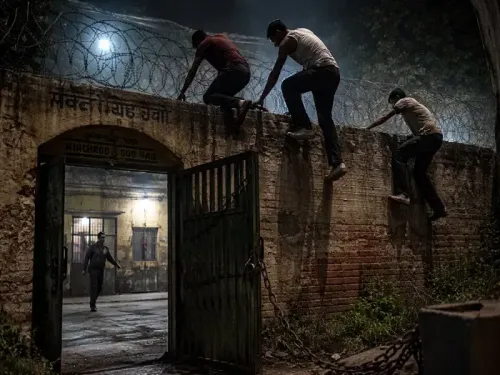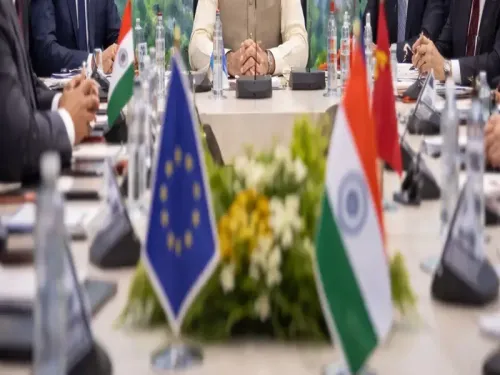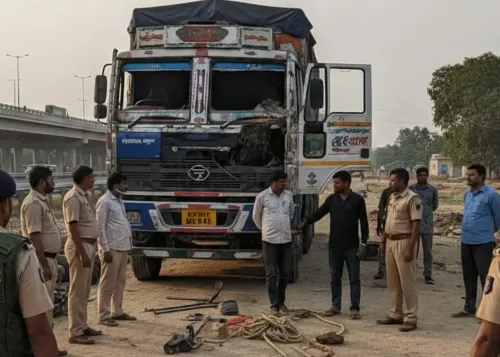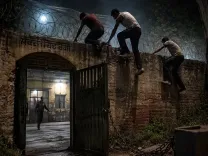What Is the Significance of Bahuda Yatra in Puri's Rath Yatra Festival?

Synopsis
Key Takeaways
- Bahuda Yatra marks the return of Lord Jagannath to Srimandir.
- The rituals symbolize deep divine kinship.
- Lord Jagannath is adorned in Suna Besha before re-entering the temple.
- Traditional offerings like Rasagola are made to appease Goddesses.
- The festival showcases Odisha’s rich spiritual heritage.
Puri, July 5 (NationPress) The sacred city of Puri is experiencing the divine return of the deities as part of the Bahuda Yatra, which signifies the end of the yearly Rath Yatra celebration.
The majestic procession is approaching its final destination, with Lord Balabhadra’s chariot, Taladhwaja, arriving at the Srimandir, followed by Devi Subhadra’s Darpadalana. Lord Jagannath’s Nandighosa follows closely after a customary stop at the Mausi Maa Temple.
Discussing the spiritual and cultural importance of the Bahuda Yatra, Madhab Chandra Puja Panda, Secretary of the Puja Panda Nijog, highlighted that the return journey transcends mere ritual.
“The Rath Yatra signifies Lord Jagannath's journey from His temple in Srimandir to His maternal aunt’s residence at Gundicha Temple. It represents a sacred family visit, and Bahuda Yatra symbolizes His return, enriched with customs that echo our age-old beliefs,” he stated.
Elaborating on the rituals observed along the way, Panda remarked: “The Lord pauses at the Mausi Maa Temple, indicating a visit to His mother’s sister. At this location, the deity is presented with Poda Pitha, a traditional delicacy, before continuing to the main temple. This act is not merely a ritual - it is a celebration of divine family bonds.”
The concluding segment of the Rath Yatra involves intricate offerings and decorations before the Lord re-enters His sanctum. “Prior to His temple re-entry, Lord Jagannath is adorned in a golden attire, Suna Besha, and bestows darshan upon the devotees. The spiritual magnificence of this ritual leaves every devotee in awe,” Panda elaborated.
He also mentioned the Niladri Bije, the festival's final ritual: “On this day, Goddess Lakshmi symbolically shows her displeasure over Lord Jagannath’s prolonged absence. She shuts the temple doors on Him. To appease her, the Lord offers Rasagola, symbolizing both divine affection and reconciliation.”
The last ritual incorporates a sacred exchange of Sanskrit chants between the temple priests of Lord Jagannath and Goddess Lakshmi before the Lord is ceremoniously welcomed back into the Srimandir.
“These ancient traditions are not just rituals - they embody Odisha’s rich spiritual heritage, showcasing the Lord’s journey through love, devotion, and divine familial connections,” stated Panda.
The city of Puri continues to be infused with devotional enthusiasm as followers eagerly anticipate the grand Suna Besha darshan, a symbolic culmination of Lord Jagannath’s return to His eternal abode.










